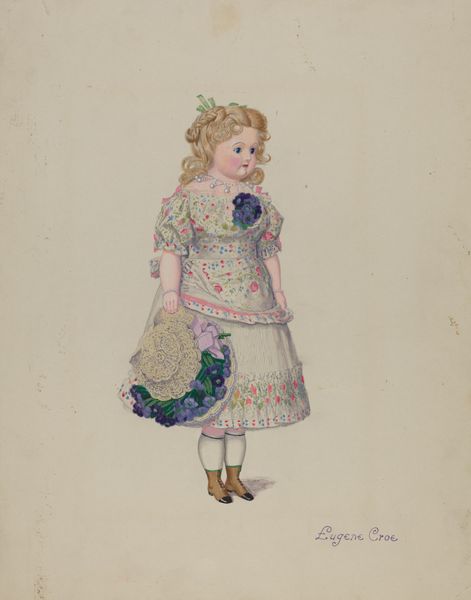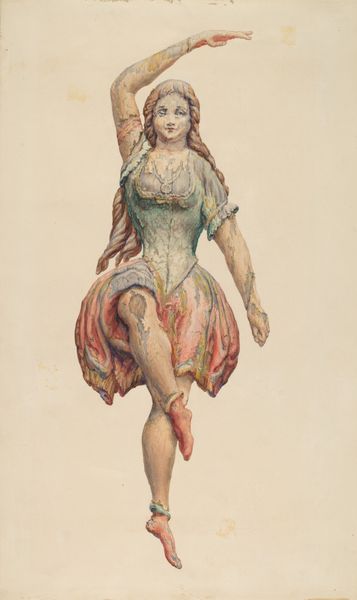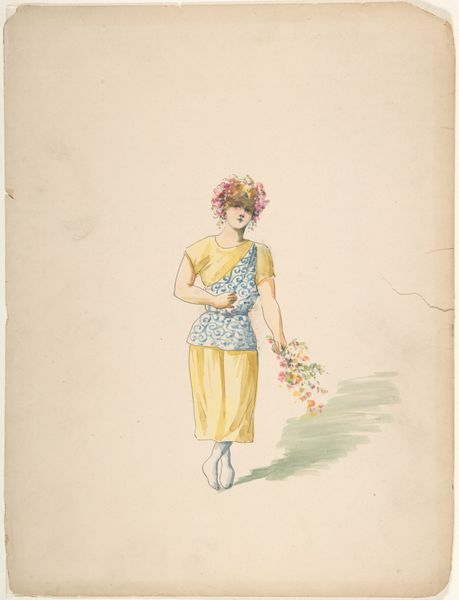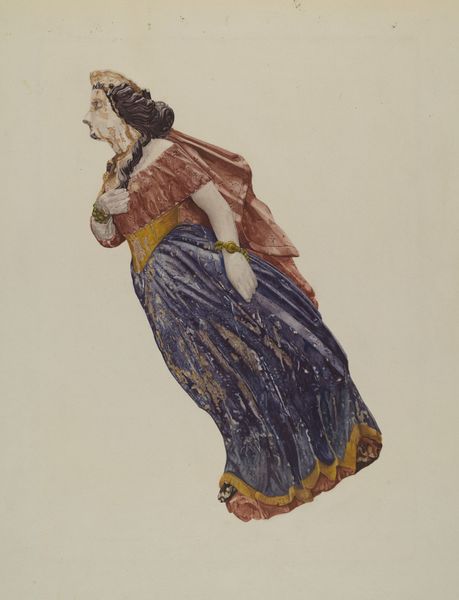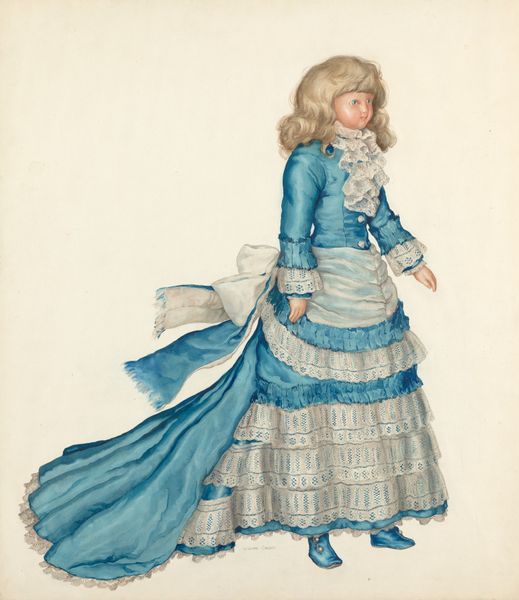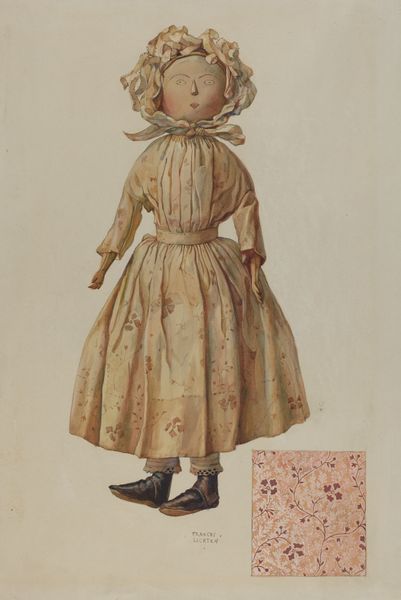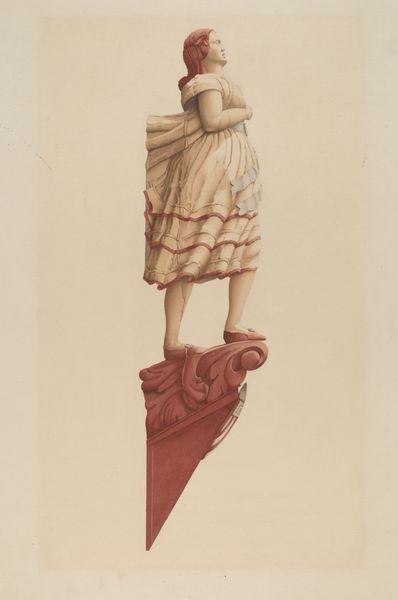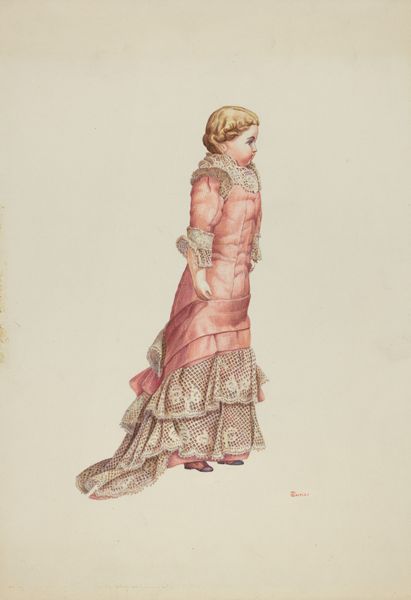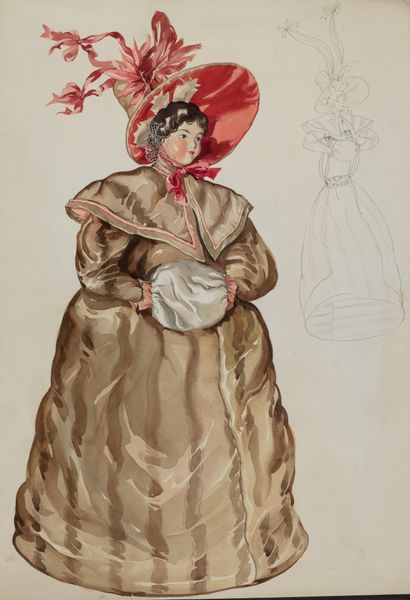
drawing, watercolor, sculpture
#
portrait
#
drawing
#
caricature
#
watercolor
#
sculpture
#
watercolour illustration
#
portrait art
#
realism
Dimensions: overall: 53.5 x 37.5 cm (21 1/16 x 14 3/4 in.)
Copyright: National Gallery of Art: CC0 1.0
Editor: Here we have "Figurehead," a watercolor drawing by Mary E. Humes, circa 1939. The subject appears to be a carved figure—perhaps one meant for the prow of a ship. I'm immediately struck by how the flowing red dress and ornate base create such a dynamic sense of movement. What do you make of it? Curator: Observe how Humes emphasizes the interplay of line and form. The sinuous lines of the dress contrast beautifully with the more rigid angles of the base. The figure itself presents a captivating tension: its static posture seemingly at odds with the implied motion suggested by the fabric. It becomes a study of contrasts; the soft curves versus hard lines, stillness versus movement, the ephemeral nature of watercolor juxtaposed against the perceived solidity of sculpture. How do these visual elements contribute to your understanding of the artwork? Editor: I see what you mean about the contrasts. I hadn’t considered how the artist uses those opposing elements to create visual interest. The colour, though…it feels a bit muted for a figurehead. Shouldn't it be brighter, more celebratory? Curator: The subtlety of the color palette contributes to the overall complexity. By avoiding overt brilliance, Humes draws our attention to the nuances of texture and form. Note the gradations within the red of the dress, creating depth and volume. Does this restrained palette, perhaps, speak to a particular historical period or artistic sensibility? Editor: Possibly. It makes me consider the WPA connection mentioned in the credits – a product of the Depression era. Perhaps a deliberate stylistic choice to reflect a more austere time? I'm beginning to see that there's more at play here than just a simple representation of a figurehead. Curator: Precisely. Through the close examination of formal elements – line, form, color, and composition – we unlock deeper layers of meaning. Editor: Thank you. I realize now that it is by analyzing formal characteristics that you create avenues for meaningful interpretations.
Comments
No comments
Be the first to comment and join the conversation on the ultimate creative platform.

